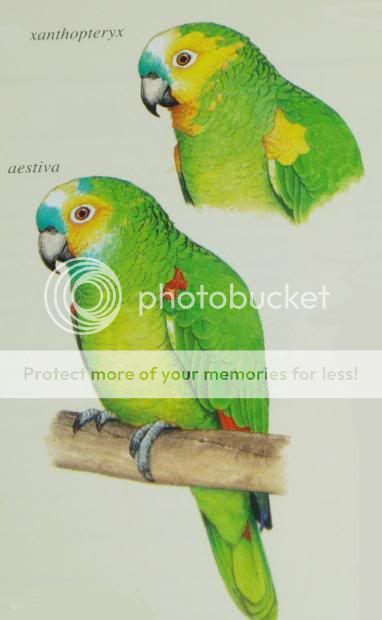Kiwibird
Well-known member
- Jul 12, 2012
- 9,539
- 111
- Parrots
- 1 BFA- Kiwi. Hatch circa 98', forever home with us Dec. 08'
Randomly found this great illustration of the difference in colorations between the 2 subspecies of blue fronts and thought I'd share :
:

It is still a mystery to me why the a.a's are more common in Europe and Australia where the a.x.'s seem more common in the Americas and middle east. Kind of an interesting thing to see how their wild cousins were exported, but WHY did the subspecies end up in such different distribution patterns in the pet trade? Seems to me they'd be fairly evenly represented all over.

It is still a mystery to me why the a.a's are more common in Europe and Australia where the a.x.'s seem more common in the Americas and middle east. Kind of an interesting thing to see how their wild cousins were exported, but WHY did the subspecies end up in such different distribution patterns in the pet trade? Seems to me they'd be fairly evenly represented all over.
